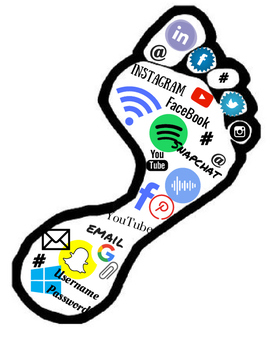In today's digital age, it's essential for students to understand the concept of a digital footprint. Your digital footprint is like a trail of your online activities and interactions. It's created by everything you do on the internet – from social media posts to online gaming and school projects. This blog will help you explore what a digital footprint is, why it matters, and how to manage it responsibly.
What is a Digital Footprint?
Your digital footprint consists of all the information about you that can be found online. This includes your social media profiles, comments on websites, photos you've shared, and even your online search history. Think of it as your online reputation.Why Does It Matter?
Your digital footprint is important for several reasons:
a. First Impressions: Just like in real life, people often form opinions about you based on your online presence. Colleges and future employers might look at your digital footprint.b. Privacy: Protecting your personal information is crucial. Sharing too much online can put you at risk of identity theft or cyberbullying.
c. Longevity: Once something is online, it's often there forever. A silly post or comment from middle school could come back to haunt you years later.
Building a Positive Digital Footprint:
a. Think Before You Post: Before posting anything online, ask yourself if it's something you'd want your future boss or college admissions officer to see.b. Use Privacy Settings: Learn how to adjust the privacy settings on your social media accounts to control who can see your posts and information.
c. Be Respectful: Treat others online with kindness and respect. Avoid cyberbullying and offensive comments.
d. Monitor Your Digital Footprint: Regularly search for your name online to see what comes up. If you find something negative, try to address it.
Protecting Your Personal Information:
a. Use Strong Passwords: Create strong, unique passwords for your online accounts to prevent hacking.b. Be Cautious with Personal Information: Don't share personal information like your address, phone number, or school online.
c. Check Privacy Settings: Review and update privacy settings on social media platforms to control who can access your information.
Cyberbullying and Online Safety:
a. Speak Up: If you encounter cyberbullying or feel unsafe online, tell a trusted adult or teacher.b. Block and Report: Most social media platforms have tools to block and report abusive users. Use them when necessary.
c. Don't Share Personal Information: Never share personal information, like your home address or school name, with strangers online.

Comments
Post a Comment